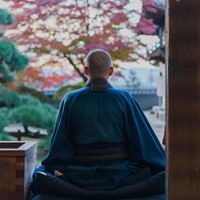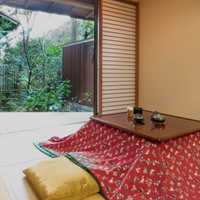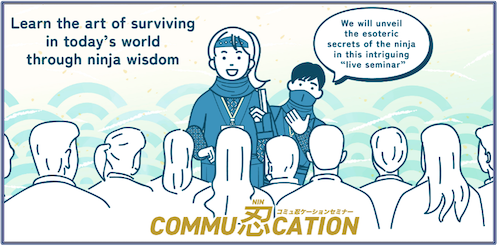NINJA: How they collected useful information (Part 2/3)

This article is contributed by COMMU忍(NIN)CATION.
In our previous column, we explained the image of ninja held by the public and what recent research has revealed about ninja. In this article, we will develop how exactly ninja obtained useful information.
Yin and Yang

You might imagine ninja breaking into a castle in the middle of the night and eavesdropping on a story or stealing a scroll. Those ninja who worked in the shadows to avoid being seen are called "In(=yin)-nin.”
On the other hand, there existed other ninja called “Yo(=yang)-nin” who operate freely, being seen in the cloud. They utilize a camouflage technique called "shichihode" to obtain information from various sources.
Disguise technique: Shichihode
The shichihode includes the following disguises:

1. Merchants: Medicine sellers, kimono sellers, etc.
2. Hokashi: Street performers
3. Sarugakushi: Japanese performing artists. They later became Noh and Kyogen performers.
4. Monk: A person who is ordained and practicing Buddhism.
5. Komuso: A monk of the Fuke sect, a branch of Zen Buddhism. They wear deep-braided hats and play shakuhachi (bamboo flute).
6. Shugendo practitioners: Esoteric Buddhist monks, also known as yamabushi. They were allowed to carry a sword.
7. Commoners: farmers, travelers, etc.
Yo-nin blended into the crowd, adopting forms of status that could easily get them past the border checkpoints. They especially disguised themselves as monks to obtain information at temples, since back then, temples used to function like cafes, schools, and salons that attracted all types of people.
Also, if you became a medicine seller, you could learn about local customs, food culture, epidemics and diseases, political dissatisfaction, and people’s relationships through conversations with customers.
Skills required for the disguise and information-gathering
For ninja to disguise themselves without being suspicious, they acquired expertise in each field of disguise. They could chant sutras and perform Noh plays when necessary. It is further amazing to know that they changed the smell of their kimonos, mastered the dialect for each region, and even altered their postures and a walking pace to match the disguised role.

Information-gathering techniques
Then, to draw meaningful information effectively, ninja behave as follows:
(1) First, make a greeting with a smile and open others’ hearts,
(2) Listen with smiles and nodding, never breaking down an argument,
(3) Then, build a relationship of trust,
(4) Finally, extend related stories to obtain essential information from them.
They could be a strategic negotiator or a skilled marketer in today's world!
Ninja obtained information in the various ways as described above. They also had a wide network with other schools of ninja and exchanged information. Even so, it was essential to keep keen judgment to determine what was true and not, and trust with the other party.

Ninja as a professional
Ninja did not even let their families notice that they were ninja and lived as a farmer or a merchant. While doing so, they learned new knowledge and continued research and training to improve their performances because that will enhance their abilities to succeed in their assignments.
The source of the motivation was to protect the well-being of their precious families and communities, as we told you in the last issue.
It was an unstable time, but instead of complaining about their unfulfilled status quo, they achieved the best they could.
Would you like to learn more about ninja?
In the next issue, we will share the e secret of unwavering mental strength. Please keep an eye out for it!
If you are interested in learning more elaborate ninja secrets, please refer to the seminar below.

















